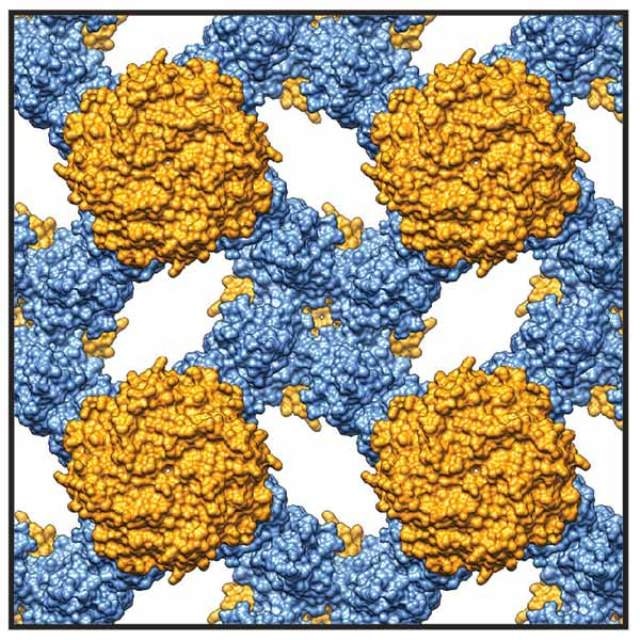May 4 2016
UC San Diego chemists have produced an ‘adaptive protein crystal’ that possesses a unique counterintuitive property, which could be useful in designing body armors and soles of running shoes. When the material is stretched in a single direction, it thickens in the perpendicular direction instead of thinning, as seen in common materials, and when the material is compressed in one dimension, it reduces in the other dimension instead of expanding and becomes thicker during the process.
 The strong, flexible bonds in the protein tiles allow them to rotate to open spaces (as seen in the sequence below from left to right). (Images by Yuta Suzuki and Timothy Baker, UC San Diego)
The strong, flexible bonds in the protein tiles allow them to rotate to open spaces (as seen in the sequence below from left to right). (Images by Yuta Suzuki and Timothy Baker, UC San Diego)
This unique property could be used to construct body armor, which strengthens when a bullet strikes it, or for the soles of running shoes that thicken for better shock absorption as the heel comes into contact with ground.
It’s a property, called ‘auxetic,’ that has been not been previously demonstrated at the molecular level through design.
Akif Tezcan, Professor of Chemistry and Biochemistry, UC San Diego
The discovery has been described in an advance online paper in this week’s Nature.
For the study, the researchers produced a sheet-like crystal that was composed of proteins linked in a standard and repeating pattern. They used a square-shaped protein called RhuA and utilized it like tiles to develop the material. The material’s flexibility enabled the tiles to either close up in a form of adaptable sieve or rotate to open spaces for porous materials.
We found a way to create strong, flexible, reversible bonds to connect the protein tiles at their corners.
Akif Tezcan, Professor of Chemistry and Biochemistry, UC San Diego
When the material is compressed or stretched in a single direction, the connected protein tiles rotate together and this leads to a corresponding contraction or expansion in the reverse directions. This relationship is better illustrated by the Poisson ratio, which is a positive measure for standard materials that compress or stretch in opposition. With regard to the new material, Tezcan’s team calculated a Poisson ratio of -1, a value at the thermodynamic limit of what is achievable.
The crystals form in a perfect way and almost no tiles are partly open or missing. The material is also self-healing. Under suitable chemical conditions, the protein tiles easily fall into place.
“This is protein design using a highly chemistry-based approach,” Tezcan said, observing that the development of the materials involves a simple and minimal design strategy that needs only a few modifications to be made to the protein building blocks.
These materials are very easy to make, yet provide many new research directions both in terms of materials applications and understanding the fundamental principles of nanoscale self-assembly.
Akif Tezcan, Professor of Chemistry and Biochemistry, UC San Diego
Other authors of the research paper are David Restrepo and Pablo Zavattieri of Purdue University; Yuta Suzuki in Tezcan’s research group; Giovanni Cardone in Baker's research group; and Timothy Baker, a professor of chemistry and biochemistry and biology at UC San Diego.